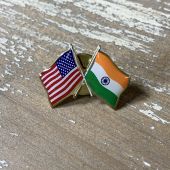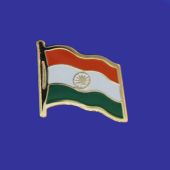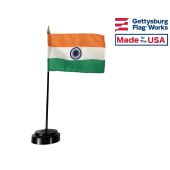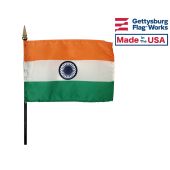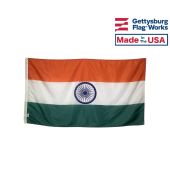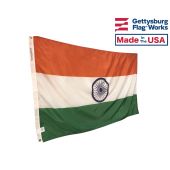Buy India Flags
- Capital of India: New Delhi
- Area of India: 2,973,190 sq. km
- Languages used in India: English, Hindi, Bengali, Telugu, Marathi, Tamil, Urdu, Gujarati, Malayalam, Kannada, Oriya, Punjabi, Assamese, Kashmiri, Sindhi, Sanskrit, Hindustani (all mentioned are official)
- Religions in India: Hindu, Muslim, Christian, Sikh
Symbolism of the Indian Flag
The 20th century was a tumultuous time for India. A part of the British Empire, India strained under the domination of a colonial power. Efforts for independence from the British was led by Mahatma Gandhi, who pioneered the strategies of nonviolent resistance later used to great effect by Martin Luther King Jr. in the United States.
After many years, the Parliament of the United Kingdom voted to give India its independence in 1947, partitioning it into the nations of India and Pakistan. One of the first acts of the new Indian congress was to establish a flag for the new nation.
The design was originally proposed by Gandhi in the early 1920's, but was modified in 1947 when it was officially adopted. The three stripes of saffron, white, and green are meant to represent courage, peace, and faith respectively. The wheel in the center, the “Ashoka Chakra”, represents the Wheel of Dharma.
Despite difficulties in the later part of the 20th century, India is emerging as a powerful economy and is playing a larger role in world affairs. As the world's largest democracy, India is an example that other nations can aspire to.


